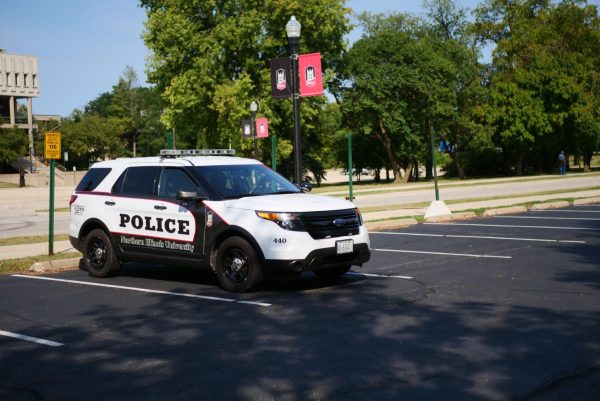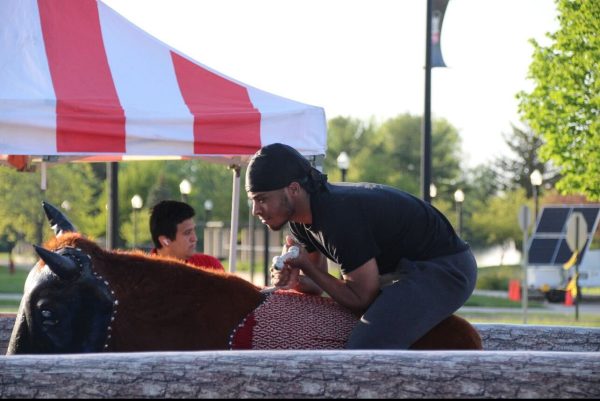Prof. finds dino skeleton
October 17, 2002
Last year, NIU’s Bill Harrison made an exciting discovery at a Montana site: dinosaur bones.
This summer, he helped uncover the entire dinosaur skeleton and possibly a new genus of dinosaur.
Harrison, associate professor of foreign languages at NIU, was with a team from Rockford’s Burpee Museum when the bones were found in June 2001. He and Carol Tuck, wife of Burpee board member Hazen Tuck, simultaneously saw toe bones and lower leg bones coming from the base of a bluff at the Montana site.
“Because we thought we might have a dinosaur skeleton, we went back this summer,” Harrison said.
Harrison, along with a team led by Mike Henderson, director of earth sciences at the Burpee Museum, returned to the site hoping to unearth the rest of the skeleton.
“We spent seven weeks altogether excavating the site,” Henderson said.
Returning to the site was a gamble for the team. The team had less of a chance of finding the dinosaur skeleton than winning the lottery. But what the team found was not only an entire dinosaur skeleton – it may be an entirely new kind of dinosaur, Harrison said.
“We exposed what is likely a new genus of dinosaur called Nanotyrannus,” Harrison said.
The dinosaur itself was found on a sandbar at the edge of a river, Harrison said. It quickly was covered by sediment when it died, which preserved its bones.
“The discovery has generated interest at Burpee to sponsor more trips to the same site in order to collect plants and animals that are associated with the dinosaur,” Harrison said. “In that way, when the dinosaur is displayed at the Burpee Museum, we’ll be able to show the flora and fauna that existed at the same time.”
The museum is studying and preparing the bones for display. The process involves removing rocks and then putting preservatives on the bones. The tools used for rock removal range from small brushes and dental tools to large sandblaster-like machines. Henderson expects it will take nine months to a year to study the bones after the rock is removed.
“We’re shooting to have her on display for our Paleo Fest two-and-a-half years from now,” Henderson said.
Studies of the bones already have indicated that the dinosaur probably was a carnivorous female. The Burpee Museum named her Jane, after Jane Solem, because Jane and her husband Robert Solem donated several million dollars to the museum in 1999. The money was used to build the Solem Wing, which likely will house the dinosaur’s skeleton.
About 20 people worked on the excavation over the summer, and about half of them were either NIU students, faculty or alumni, Harrison said. The NIU student participants were Shannon Farley, Scott Santoyo and Michael Spacucello.
“The people at the museum were great and they helped me learn a lot,” Spacucello said. “It was a fun and exciting experience.”
The dinosaur skeleton is at the Burpee Museum in a plaster cast imbedded in two tons of rock, Harrison said.













